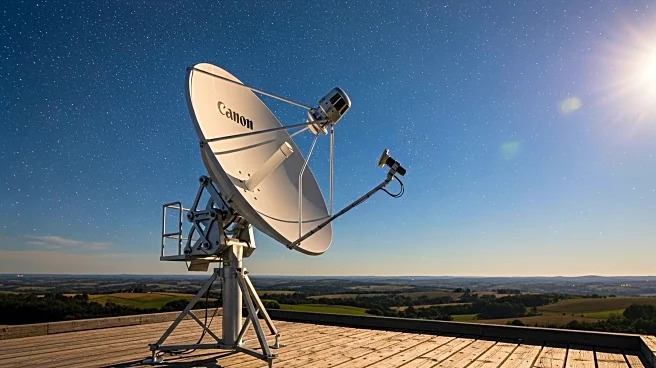What's Happening?
Starlink, the satellite internet service provider, has announced a significant price reduction for its standard kit, now available for $175, down from the usual $349. This 50% discount is available nationwide, marking a departure from previous promotions that were limited to specific regions. The move aims to make Starlink more accessible to households in rural areas where traditional internet service providers (ISPs) may not offer adequate service. Despite the price cut, Starlink's monthly service fee remains at $120, which is higher than the U.S. average of $78. The service offers median speeds of 105Mbps download and 15Mbps upload, according to Ookla, though these speeds can vary based on user density in a given area.
Why It's Important?
The reduction in the cost of Starlink's dish could significantly impact rural communities in the U.S., where internet access has historically been limited. By lowering the entry cost, Starlink is potentially enabling more households to access high-speed internet, which is crucial for education, remote work, and accessing digital services. However, the ongoing high monthly fee may still be a barrier for some users. The service's performance, while improved, still does not meet the Federal Communications Commission's definition of broadband, which could affect its competitiveness against cable and fiber options where available.
What's Next?
The duration of this price reduction is currently unspecified, suggesting potential changes in availability. As Starlink continues to expand its satellite network, it may further improve service speeds and reduce congestion issues. Consumers in rural areas are likely to weigh the benefits of Starlink against traditional ISPs, considering factors like cost, speed, and reliability. The broader implications for the satellite internet market could include increased competition and innovation as other providers respond to Starlink's pricing strategy.
Beyond the Headlines
Starlink's expansion and pricing strategy highlight the ongoing digital divide in the U.S., where rural areas often lack the infrastructure for high-speed internet. This development raises questions about the role of satellite internet in bridging this gap and the potential need for policy interventions to ensure equitable access to digital resources. Additionally, the environmental impact of satellite proliferation and its implications for space traffic management remain areas of concern.











